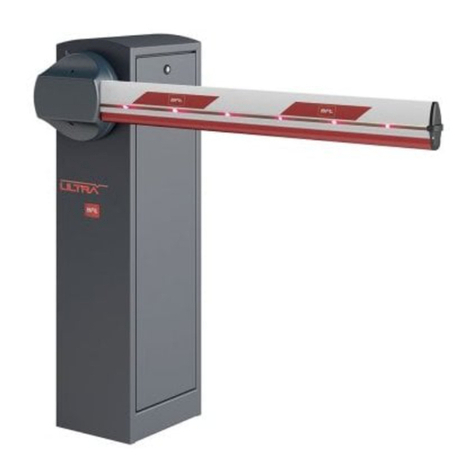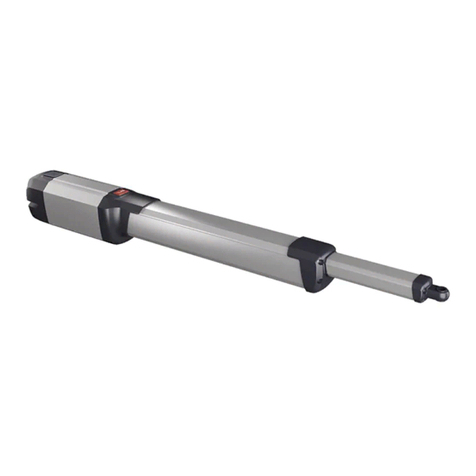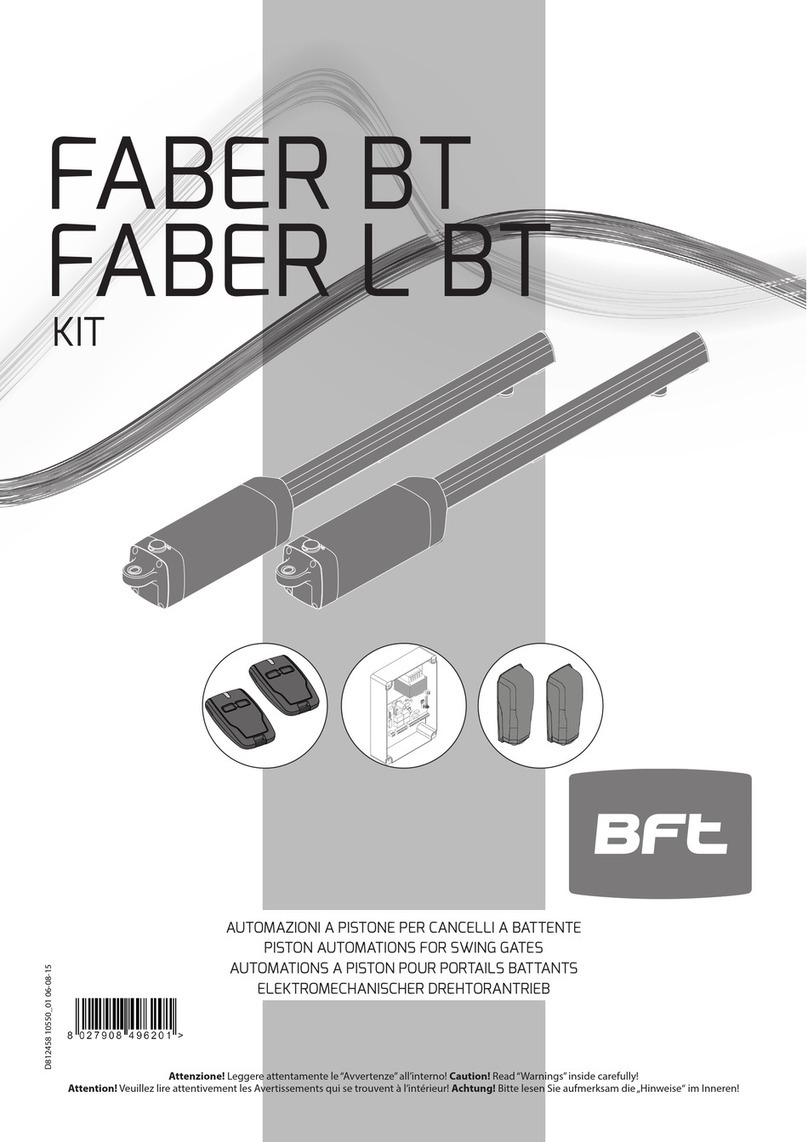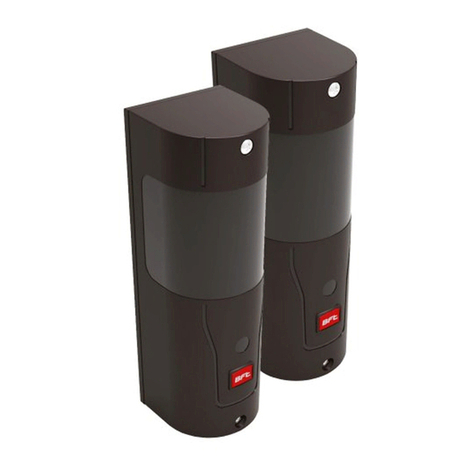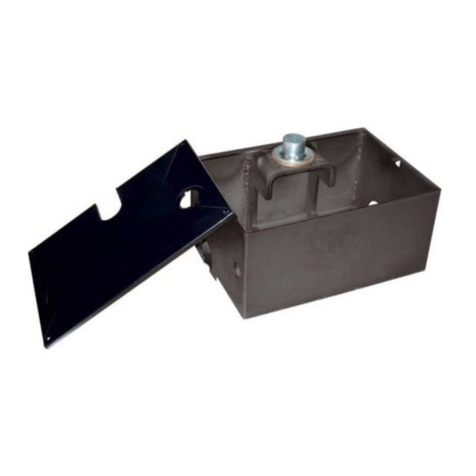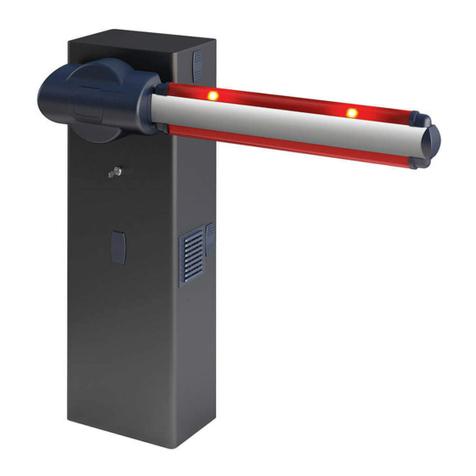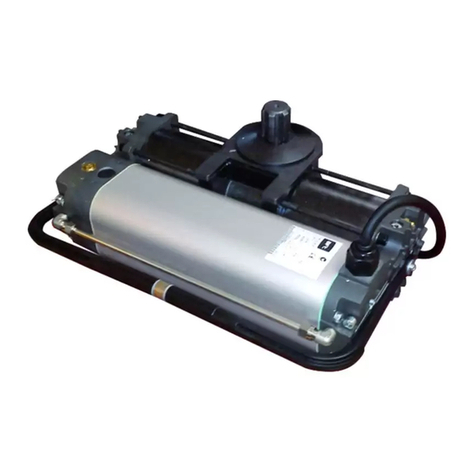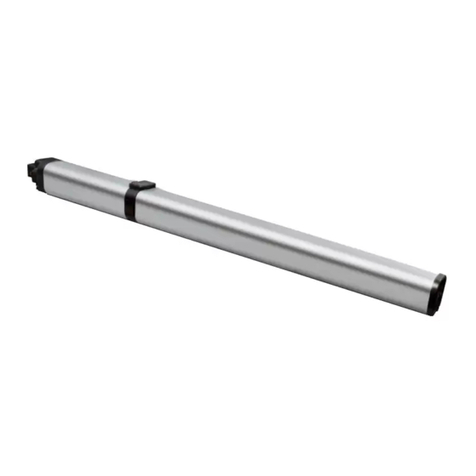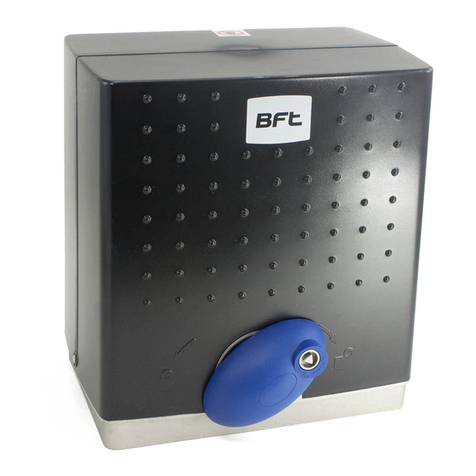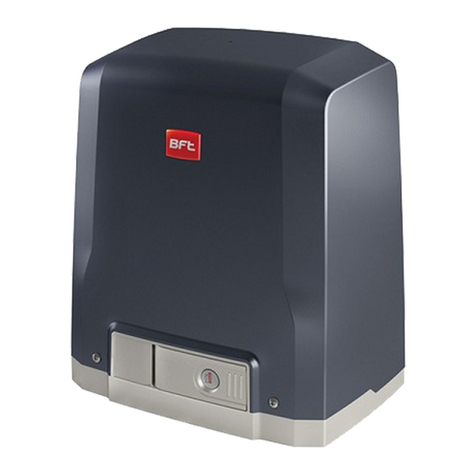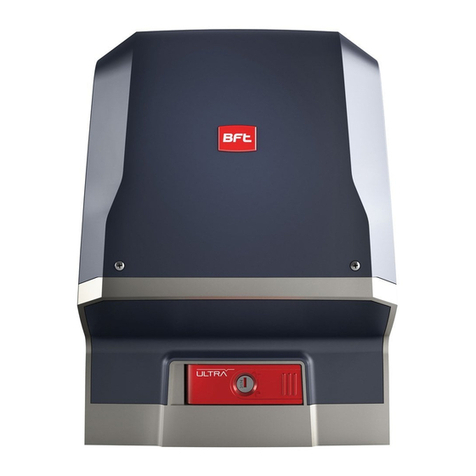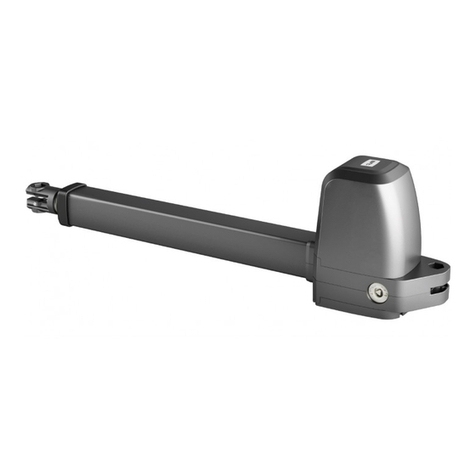
INSTALLATION MANUAL ENGLISH
Thank you for buying this product, our company is sure that you will be more
than satised with the product’s performance. The product is supplied with a
“Warnings”leaet and an “Instruction booklet”. These should both be read care-
fully as they provide important information about safety, installation, operation
andmaintenance.This productcomplies withthe recognisedtechnicalstandards
and safety regulations. We declare that this product is in conformity with the
following European Directives: 2004/108/CE, 2006/95/CE, 98/37/EEC, 99/05/EEC
(and subsequent amendments).
1) GENERAL SAFETY
WARNING! An incorrect installation or improper use of the product can cause
damage to persons, animals or things.
• The “Warnings” leaet and “Instruction booklet” supplied with this product
should be read carefully as they provide important information about safety,
installation, use and maintenance.
• Scrap packing materials (plastic, cardboard, polystyrene etc) according to the
provisions set out by current standards. Keep nylon or polystyrene bags out
of children’s reach.
• Keep the instructions together with the technical brochure for future refer-
ence.
• This product was exclusively designed and manufactured for the use specied
inthepresent documentation.Anyother use notspeciedin this documenta-
tion could damage the product and be dangerous.
• The Company declines all responsibility for any consequences resulting from
improper use of the product, or use which is dierent from that expected and
specied in the present documentation.
• Do not install the product in explosive atmosphere.
• The construction components of this product must comply with the following
EuropeanDirectives:2004/108/CEE,2006/95/EEC,98/37/EEC andsubsequent
amendments. As for all non EEC countries, the abovementioned standards as
well as the current national standards should be respected in order to achieve
a good safety level.
• The Company declines all responsibility for any consequences resulting from
failuretoobserveGoodTechnicalPracticewhenconstructingclosingstructures
(door, gates etc.), as well as from any deformationwhich might occur during
use.
• The installation must comply with the provisions set out by the followingEu-
ropean Directives: 2004/108/CEE, 2006/95/EEC, 98/37/EEC and subsequent
amendments.
• Disconnect the electrical power supply before carrying out any work on the
installation. Also disconnect any buer batteries, if tted.
• Fit an omnipolar or magnetothermal switch on the mains power supply, hav-
ing a contact opening distance equal to or greater than 3,5 mm.
• Check that a dierential switch with a 0.03A threshold is tted just before the
power supply mains.
• Check that earthing is carried out correctly: connect all metal parts for closure
(doors, gates etc.) and all system components provided with an earth termi-
nal.
• Fit all the safety devices (photocells, electric edges etc.) which are needed
to protect the area from any danger caused by squashing, conveying and
shearing.
• Position at least one luminous signal indication device (blinker) where it can
be easily seen, and x a Warning sign to the structure.
• The Company declines all responsibility with respect to the automation safety
and correct operation when other manufacturers’components are used.
• Only use original parts for any maintenance or repair operation.
• Do not modify the automation components, unless explicitly authorised by
the company.
• Instruct the product user about the control systems provided and the manual
opening operation in case of emergency.
• Do not allow persons or children to remain in the automation operation
area.
• Keep radio control or other control devices out of children’s reach, in order to
avoid unintentional automation activation.
• The user must avoid any attempt to carry out work or repair on the automation
system, and always request the assistance of qualied personnel.
• Anything which is not expressly provided for in the present instructions, is
not allowed.
• Installation must be carried out using the safety devices and controls prescribed
by the EN 12978 Standard.
• Fit any xed control within sight of the door but away from moving parts,
higher than 1.5 m.
• Add a label bearing the following notices:
“Keep children away from the moving door”.
“WARNING: risk of squashing”.
Regularly check that the door reverses its movement when colliding with an
obstacle 50 mm away from the oor and, if necessary, set it correctly.
2) GENERAL OUTLINE
The EOS 120 system is suitable for motorising sectional doors (g. 3), protrud-
ing fully retracting spring-operated overhead doors (g. 2) and counterweight
overhead doors provided with an appropriate towing arm (g. 4). The overhead
door must not be higher than 3 metres. Its easy installation allows fast tting
without needing the door to be modied. The irreversible gearmotor keeps the
door locked in the closing position.
3) TECHNICAL SPECIFICATIONS
3.1) Actuator
Power supply:....................................................230V~±10%, 50/60Hz single-phase (*)
Motor voltage:.................................................................................................................24V
Max. power absorbed from mains:..............................................................................236W
Lubrication:.................................................................................................permanent grease
Towing and pushing force:............................................................................................1200N
Working stroke:....................................TRACK L.=2900 working stroke=2400 mm(**)
..................................................................TRACK L.=3500 working stroke=3000 mm(***)
Average speed:...........................................................................................................4,5 m/min
Impact reaction:..........................................integrated torque limiter on control panel
Manoeuvres in 24 hours:.....................................................................................................100
Limit switch:..................................................................................Electronic with ENCODER
Courtesy light:..............................................................................24V
25W max, E14 bulb
Working temperature:.......................................................................................-15°C / +60°C
Degree of protection:..........................................................................................................IPX0
Motor head weight:..............................................................................................................5 kg
Noise level:.....................................................................................................................<70dB(A)
Dimensions:.....................................................................................................................see g.1
(*) Available in all mains voltages.
(**)By turning the motor head by 90° (Fig.11) the useful stroke will be 2580 mm.
(***)By turning the motor head by 90° (Fig.11) the useful stroke will be 3180 mm.
4) ACTUATOR INSTALLATION
4.1) Preliminary checks
• Check that the door is balanced.
• Check that the door slides smoothly along its entire travel.
• If the door has not been newly installed, check the wear condition of all its
components.
• Repair or replace faulty or worn parts.
• The automation reliability and safety are directly inuenced by the state of
the door structure.
• Before tting the motor, remove any superuous ropes or chains and disable
any unnecessary appliances.
4.2) FITTING
After unpacking, dispose of the parts which make up the package properly, by
separating the dierent type of materials (cardboard, polystyrene, PVC,
etc.) according to the national rules in force.
1) Remove the existing locking bolt from the cremone bolt of the door.
2) Fit the metal wall bracket to the track-holder bracket using the screws sup-
plied as standard (Fig.12 Ref.E). The screws must not be tightened, so that
the bracket can be rotated.
3) In order for the track to be correctly xed, mark the mid-point of the door,
position the BIN onto the ceiling and mark the holes (Fig.6).
Make sure that the distance between the track and the door panel is com-
prised between 108 and 166 mm (see Fig.14). If this is not the case, use the
brackets provided (Fig.10). If the distance is smaller, the towing plate must
be shortened.
4) Drill the ceiling using a D.10 bit, with reference to the markings made previ-
ously, and insert the plugs.
5) With the help of an adequate support, lift the entire motor, screw the screws
onto the track-holding bracket without xing them to the door frame
(Fig.9A) or, if the height allows it, t the bracket to the masonry lintel by
means of plugs (Fig.9B).
6) Rest the motor onto the oor (taking care not to damage it) and x the
articulated bracket to the door frame or to the ceiling (Fig.9A, Fig.9B).
7) Lift the motor-driven head until everything rests against the ceiling and in-
sert the xing screws which lock the track.
8) In the case where the motor is not directly xed to the ceiling, t the brack-
ets as shown in Fig.10 Ref.C, after marking and drilling the holes with refer-
ence to the brackets.
9) In the case where the track is made in two halves, see Fig.13; for the dier-
ent types of xing methods, see the previous gures.
10)
Release the carriage and x the anchoring brackets to the door panel
(Fig.14). The distance allowed between track and sectional door is 108 to
166 mm. In case of greater distance, it is necessary to use the brackets and
lower the motor; in case of shorter distance, it is necessary to shorten the
towing plate.
11)
Check that the carriage and anchoring bracket screws provide for correct
play of the towing bar.
12)
Stick the adhesive labels supplied next to the dangerous points (Fig. 5).
5) CHAIN TIGHTENER ADJUSTMENT (EOS 120)
The operator supplied is already calibrated and inspected. Should the chain ten-
sion need to be adjusted, proceed as shown in g. 15.
WARNING: the anti-tear spring element must never be completely com-
pressed. Scrupulously check that the spring does not become totally com-
pressed during operation.
6) ELECTRICAL INSTALLATION SET-UP (Fig.16)
M) Actuator
Ft) Transmitter photocell
Fr) Receiver photocells
T) 1-2-4 channel transmitter.
Arrange for the connections of accessories and safety and control devices to
reach the motor unit, keeping the mains voltage connections clearly separate
from the extra low safety voltage connections (24V) by means of the appropriate
cable holder (g. 8 ref. 5P1).
Proceed to connection following the indications given in the wiring diagram.
The cables for connecting the accessories must be protected by a raceway (fig. 8 ref. 5C1).
EOS 120 VENERE D - 15
D811526 00100_01
